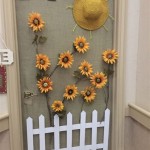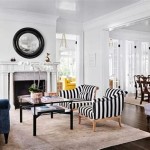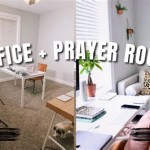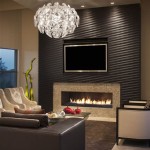Entertainment Room Decorating Ideas
Entertainment rooms serve as central hubs for relaxation, socializing, and enjoying various forms of media. Careful planning and thoughtful design can transform these spaces into immersive and inviting environments. This article explores a variety of decorating ideas to enhance entertainment rooms, regardless of size or budget.
Theme Selection and Color Palette: Establishing a theme helps unify the design elements. Themes can range from classic cinema to modern minimalist or even a specific decade. Once a theme is selected, a corresponding color palette should be chosen. This palette will guide furniture choices, wall colors, and decorative accents. Neutral colors provide a versatile backdrop, while bolder colors can create a dramatic effect.
Focal Point: Every entertainment room needs a focal point. Typically, this is the television or a projector screen. The seating arrangement should be oriented towards this focal point. Consider the viewing distance and angle when placing furniture. Wall-mounted televisions save space and create a clean look, while projector screens offer a more cinematic experience.
Seating Arrangements: Comfortable seating is paramount in an entertainment room. Sectionals offer ample seating and can be configured to suit the room's shape. Individual armchairs provide flexibility and can be rearranged easily. Consider adding ottomans or beanbag chairs for additional casual seating. Ensure sufficient space between seating for easy movement.
Lighting Considerations: Lighting plays a crucial role in setting the mood. Ambient lighting provides general illumination, while task lighting is used for specific activities like reading. Accent lighting highlights architectural features or artwork. Dimmable lights offer the most flexibility, allowing users to adjust the brightness based on the activity. Consider installing blackout curtains or blinds to minimize external light interference for optimal viewing experiences.
Wall Treatments: Wall treatments significantly impact the overall aesthetic. Paint is a cost-effective option and offers a wide range of colors and finishes. Wallpaper can add texture and pattern, while wood paneling creates a warm and inviting atmosphere. Consider using acoustic panels to improve sound quality and reduce echo, particularly in rooms with hard surfaces.
Flooring Options: Flooring should be both comfortable and durable. Carpeting provides a soft and sound-absorbing surface, while hardwood or laminate flooring offers a more contemporary look. Area rugs can define specific areas within the room, such as the seating area, and add warmth and texture. Consider using rug pads to prevent slippage and protect the flooring underneath.
Storage Solutions: Entertainment rooms often house a variety of electronic devices, media, and games. Incorporating adequate storage is essential to maintain a clutter-free environment. Media consoles provide storage for DVDs, Blu-rays, and gaming consoles. Shelving units can display books, collectibles, and decorative items. Closed cabinets conceal clutter and maintain a streamlined appearance.
Cable Management: Tangled cables can detract from the overall aesthetic. Implement cable management solutions to conceal cords and wires. Cable ties, organizers, and raceways can effectively manage and hide cables, creating a cleaner and more organized look. Consider wireless options for devices whenever possible to minimize cable clutter.
Acoustic Treatment: Optimizing the acoustics of an entertainment room enhances the audio experience. Acoustic panels absorb sound reflections, reducing echo and reverberation. Strategically placing these panels on walls and ceilings can significantly improve sound clarity. Thick curtains and rugs also contribute to sound absorption.
Decorative Accents: Personal touches and decorative accents add character and personality to the space. Throw pillows, blankets, and artwork can enhance the visual appeal. Consider incorporating elements related to the chosen theme, such as movie posters, vintage record players, or sports memorabilia. Plants can also add a touch of nature and improve air quality.
Ventilation and Climate Control: Proper ventilation and climate control ensure a comfortable viewing experience. Ensure adequate airflow to prevent the room from becoming stuffy. Install a ceiling fan or air conditioning unit to regulate temperature. Consider a programmable thermostat to optimize energy efficiency.
Smart Home Integration: Integrating smart home technology can enhance the functionality and convenience of the entertainment room. Smart lighting systems allow for customized lighting scenes, while voice-activated assistants can control various devices. Smart thermostats and motorized blinds offer automated climate control and light management.
Budgeting and Planning: Before embarking on any decorating project, establish a realistic budget. Prioritize essential items and allocate funds accordingly. Create a detailed plan outlining the desired design elements, furniture placement, and budget allocations. This plan will serve as a roadmap throughout the decorating process.
DIY Projects: Incorporating DIY projects can personalize the space and save money. Repurposing existing furniture, creating custom artwork, or building shelving units are just a few examples of DIY projects that can add a unique touch to the entertainment room.

10 Entertainment Room Ideas For Your Friends And Family Designcafe

6 Stunning Ideas For Your Home Theatre Room Decor

10 Entertainment Room Ideas For Your Friends And Family Designcafe

10 Best Decorating Ideas For Your Gaming Room Foyr

Create An Awesome Home Game Room With These 26 Ideas Extra Space Storage

A Quick Guide To Best Entertainment Room Design Ideas

10 Entertainment Room Ideas For Your Friends And Family Designcafe
30 Modern Media Room Ideas And Designs Renoguide N Renovation Inspiration

Ideas For A Family Entertainment Room The Architects Diary

16 Home Theater Ideas Renovation Tips And Decor Examples
Related Posts







